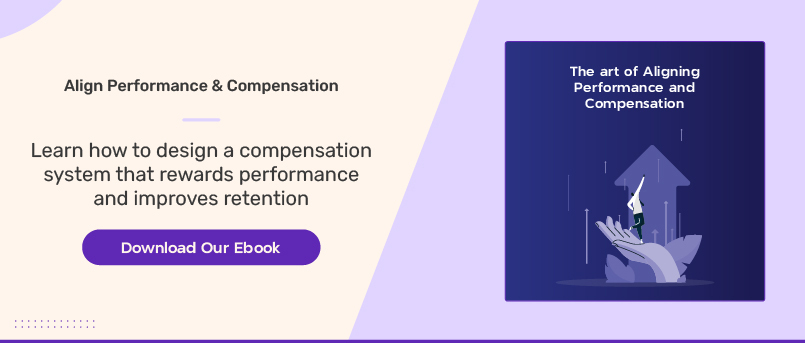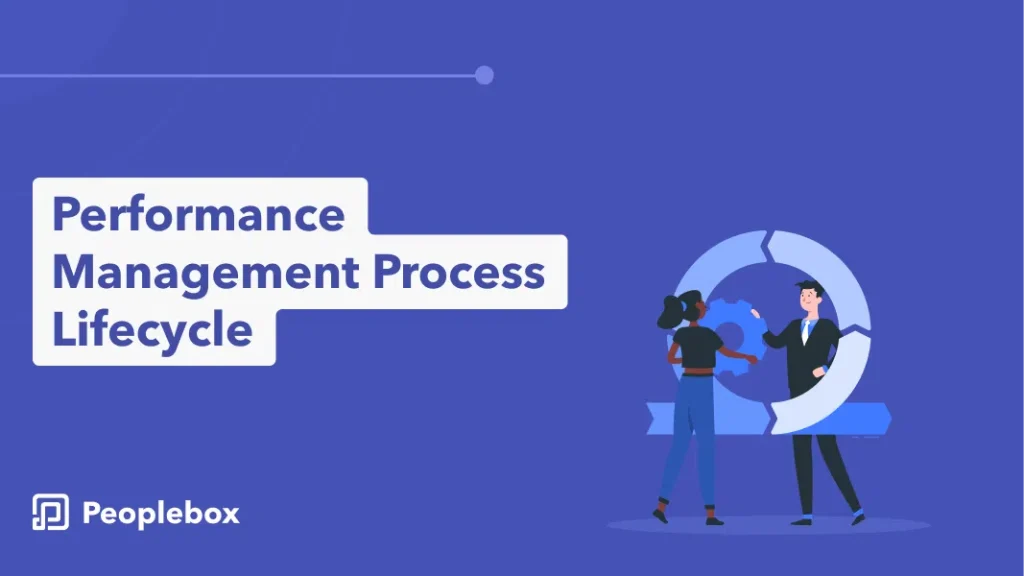Calculating employee turnover rate is essential for any organization aiming to enhance its workforce stability and improve employee retention. This key performance indicator provides insights into the health of your workplace culture and the effectiveness of your hiring processes.
By understanding how to calculate employee turnover rate, you can identify trends, benchmark against industry standards, and implement strategies to reduce turnover percentages.
In this article, we’ll tell you how you can calculate employee turnover in your organization today!
Key Takeaways
👉🏼 Employee turnover rate is a metric that measures the number of employees leaving your organization in a given period.
👉🏼 You can calculate employee turnover rates using two formulas: the separation rate and the turnover rate.
👉🏼 High turnover hurts! Implement strategies like competitive pay, growth opportunities, and positive work culture to minimize employee turnover and keep employees happy and engaged.

What Is Turnover Rate?
Employee turnover rate is the percentage of employees who leave an organization during a given time period, typically calculated annually or quarterly. It is an important metric that provides insights into employee engagement, workforce stability, and the effectiveness of HR policies and practices.
Turnover can be classified into two main categories:
👋 Voluntary Turnover: This occurs when employees choose to resign for various reasons, such as career advancement, personal circumstances, or dissatisfaction with their current role.
😱 Involuntary Turnover: This happens when employees are terminated or laid off due to performance issues, organizational restructuring, or other factors beyond their control.
Analyzing who is leaving, when they are leaving, and why provides valuable insights to reduce undesirable turnover.
Employee Turnover Formula
The basic formula for calculating employee turnover rate is:
Turnover Rate (%) = (Number of Employees Separated / Average Number of Employees) x 100
Later in this article, we’ll discuss the details of this formula and how to find the required numbers.
Why Should You Calculate Employee Turnover Rate?
High employee turnover is a cause for concern, and it’s important to understand why. The consequences are far-reaching and affect several parties in your organization.
💰 Cost
High turnover leads to increased hiring costs as organizations rush to fill vacancies, often relying on expensive recruitment agencies. This urgency can result in poor hiring decisions, leading to further turnover and additional costs.
Think about it this way, losing employees on the engineering team will inadvertently cause project hiccups and launch delays. The team would lose precious time during deployment if they lost a fully functional team member, and had to train someone new simultaneously.
If this kind of turnover became commonplace in your company, there would be more errors, lost time, and less ROI on salaries paid.
⚙️ Productivity
New employees will take time to get acclimated to your company, while your existing employees will take time to get acclimated to their communication styles and general work ethic.
This costs both parties a good amount of productivity — and it isn’t feasible for the new employee to just know how things work from the first day.
Your own work will also be seriously affected if you spend all your time on recruiting efforts and attending to the needs of the new employees instead of overseeing day-to-day processes.
🤕 Morale
If your employees leave often, the above cycle of lowered productivity and constant readjustment continues indefinitely.
Existing employees experience a dip in morale, because not only do they have to keep retraining people and getting used to new faces, but they’re now worried about losing their jobs, or wondering what could be missing from the workplace that caused the others to leave.
Newer employees may walk into a tired environment, and not get a warm welcome because their teams are exhausted from greeting new hires just to watch them leave.
The London School of Economics found that lower turnover leads to higher profitability and better productivity.
On the contrary, high turnover leads to unhappy, unproductive employees — and this low morale keeps spreading by affecting the company’s bottom line and causing stakeholders and management to get worried too.
🧠 Talent
If your employees were top performers, your organization will take a hit in many ways once they leave. At the very least, even the average employee will take hard-earned skills and institutional knowledge with them with their exit.
Employees are relatively easy to find, talent is not.
🤝 Customer Satisfaction
When employee turnover is high, there’ll be many fresh recruits joining your company, with little or no experience or knowledge about the business.
Customer service quality takes a hit because new hires would not be able to deliver the personalized skills it takes to resolve issues effectively. This is especially true for higher-ticket clients, as they bring in more revenue to your company. They expect the best, which your new hire may not be able to immediately deliver.
With so many competitors in the market, these clients may simply take their business elsewhere, causing a steep drop in your organization’s income.
🫂 Culture
Great corporate culture helps a business grow but is not easy to foster and retain. Google, Zoom, and Netflix are good examples of companies that successfully execute corporate culture well.
Creating a great company culture (or even maintaining the existing culture) is impossible when people are perpetually leaving.
A constantly revolving door of employees will also mean your team will not have a chance to bond meaningfully or share values, resulting in a very disjointed workforce.
🗒️ Planning
Offering competitive pay and benefits, creating a positive work culture, and providing opportunities for growth and development are all good ideas, but high turnover will make it difficult for these employee retention strategies to stick. You ultimately waste resources used to implement these strategies on employees who leave.
As for succession planning, you need to identify and develop future leaders within your company, so you have a pipeline of talent ready to step into these key roles whenever they become available.
However, if these leaders are constantly getting better offers and leaving, you have to start the process again, look for another replacement, and train them for the job. A constant repeat of this is annoying, time-consuming, and a waste of your efforts.
Is there no hope? Well, there is.
But before we discuss how to decrease employee turnover, let’s quickly examine how to calculate it.
How to Calculate Employee Turnover Rate in 5 Steps?
Step 1: Define Your Timeframe
As with most data analysis, the first step of employee turnover analysis is deciding the period and frequency of measurement. The three most common choices are monthly, quarterly, and annually.
1. Monthly Turnover Rate
Monthly calculations provide immediate insights. If you notice a sudden spike in turnover, you can investigate right away, rather than discovering the issue months later.
2. Quarterly Turnover Rate
Quarterly calculations offer a mid-range perspective, capturing trends that monthly data might miss while not being as broad as annual figures. This helps smooth out seasonal fluctuations, such as temporary employees or interns leaving at the end of a quarter.
3. Annual Turnover Rate
Annual calculations highlight long-term patterns and tendencies that might be overlooked in shorter timeframes. For example, while a high turnover rate in April might seem alarming, looking at annual data could reveal a seasonal trend unrelated to job satisfaction or management issues.
Additionally, annual data allows for comparisons with industry benchmarks to gauge your organization’s performance accurately.
Step 2: Gather the Data
In the next step, you’re going to need a total of three different figures to calculate your turnover rate. Fortunately, all of them should be easy to find, as they’re all related to basic operational figures:
1. The number of employees that you started the period with.
2. The number of employees who left during that period of time, including but not limited to termination, retirement, or resignation.
3. The total number of employees by the end of the period.
This should be available in your company’s HR system or personnel records.
Step 3: Calculate the Average Number of Employees
To calculate your turnover rate, you need to determine the average number of employees during the period. There are two common methods to do this:
1️⃣ Simple Average
This method calculates the average by taking the number of employees at the start and end of the period and dividing it by two.
Formula: (Employees at the start of the year + Employees at the end of the year)/2
2️⃣ Weighted Average
This method is more accurate and gives a detailed picture, especially if you have multiple data points.
To calculate using the weighted average:
Simply divide the number of days in a month by the number of days in the total period. If you’re calculating for January, a quarterly period, then you’ll divide 31 days by 90 total days.
Let’s look at an example.
First, let’s calculate the weights for each month:
- January: 31 days / 90 total days = 0.3444
- February: 28 days / 90 total days = 0.3111
- March: 31 days / 90 total days = 0.3444
Next, let’s multiply each headcount by its weight:
- January: 100 employees * 0.3444 = 34.44
- February: 110 employees * 0.3111 = 34.22
- March: 120 employees * 0.3444 = 41.33
Now, let’s add up those weighted headcounts: 34.44 + 34.22 + 41.33 = 109.99
Finally, let’s divide by the sum of the weights (which should always be 1): 109.99 / 1 = 109.99
So, your weighted average number of employees for the first quarter is about 110.
💡 Tip: Use the weighted average method to examine your employee numbers more deeply instead of just measuring the number of employees you have at the beginning and end of the year.
Step 4: Choose Your Employee Turnover Rate Formula
There are two common methods for estimating the employee turnover rate properly:
1️⃣ Separation Rate Formula
The separation rate focuses on the number of employees who left the organization within a specific period, regardless of the reason. This rate helps understand the overall departure trend in the organization.
Formula:
Separation Rate=(Number of Employees Who Left/Average Number of Employees)×100
If 10 employees left and the average number of employees was 200, the separation rate would be:
Separation Rate=(10/200)×100=5%
2️⃣ Turnover Rate Formula
The turnover rate also considers the number of employees who left, but it focuses more on voluntary employee separations, such as resignations. This rate is useful for understanding how many employees choose to leave the organization.
Formula:
Turnover Rate= (Number of Voluntary Separations/Average Number of Employees)×100
If 8 employees voluntarily resigned and the average number of employees was 200, the turnover rate would be:
Turnover Rate=(8/200)×100=4%
Step 5: Interpret Your Results
Now that you have your numbers, it’s time to find out what they mean. Do you have a healthy turnover rate?
The U.S. Bureau of Labor Statistics says an average employee turnover rate of 47.2% is healthy.
A healthy rate may vary from one industry to another. The only way to find out is to look at the documentation for your organization’s industry benchmarks and compare them to your numbers.
If you see a higher-than-average employee turnover rate for normal industry standards, then you need to investigate why and consider new retention strategies. We’ll go deeper into that in the next section.

How to Minimize Employee Turnover?
If the turnover rate of your workers is higher than you would like, here’s what you can do:
⏫ Enhance the Onboarding Experience
Start by offering comprehensive training to new hires with all the necessary skills and knowledge to do their jobs effectively to kickstart their employee experience on the right note. Explain the company’s history, mission, values, and culture, to help them feel included and up-to-date with your organization’s culture.
Give them clear tasks and goals to work towards during their first couple of weeks.
For example, send a welcome letter to new employees with instructions on who to contact for questions, where to go on their first day, and sign-ins for any software they for work. Appoint a mentor who will reach out to onboard them and answer all their questions.
💰 Pay Competitively
Compare your compensation plans against industry norms — that will show you whether your employees are being paid fairly. Carry out labor market surveys to scope the annual salary and benefits packages offered in your field.

📚 Offer Learning Opportunities
Develop training programs that are customized to each employee’s career aspirations along with mandatory courses that they need to stay competent in their job roles. Encourage mentoring or coaching activities to promote knowledge-sharing.
For example, you could invest in a Learning Management System (LMS) to publish courses and resources for staff so they can access it systemically whenever they want to dedicate time to career development.
💡 Tip: Urge managers to send individual development plans for each employee.
😍 Promote a Positive Work Culture
Create a mutually respectful environment so employees can collaborate freely. Encourage staff to voice their ideas, opinions, and worries by conducting employee engagement surveys, focus groups, or face-to-face meetings.
You could also conduct team-building activities or social events to deepen relationships or start programs recognizing individual milestones to encourage employees.
📅 Provide Flexible Working Arrangements
Understand what work-life balance means to different types of employees. It might be working from home for someone, working irregular hours for someone else, or a 4-day work week for another employee. Trust staff members to manage their own time and workload to rank higher in job satisfaction.
This is not as simple as allowing employees to work from home for one or two days a week. You also have to ensure that they have the necessary tools and technology to get their work done remotely.
🗣️ Feedback and Recognition
Create a culture that attaches great value to feedback and publicizes excellent performance on a regular basis.
Introduce regular performance reviews and 1:1 catchups. Tell managers to give teammates as much ongoing constructive criticism as they require. Reward staff who go above and beyond.
For example, you could start a recognition program among staff members, where employees may nominate their colleagues for prizes or bonuses. To boost employee morale, mention successes in the company’s internal communication system.

☮️ Invest in Well-being
Invest in your employees’ physical, mental, and emotional well-being. This may mean offering gym memberships, healthy snacks in the office, or access to Employee Assistance Programs (EAPs) that provide counseling and support services. Find out if lower employee satisfaction or an increased rate of employee departure is because of poor management.

You could connect with fitness centers or studios locally to provide employees with discounts on memberships or classes on-site. You may also host seminars related to topics like stress management, mindfulness, and nutrition.
🥨 Use Peoplebox to Get Deeper People Insights
Now that you’re equipped to calculate your employee turnover rate, you can use it to gain valuable insights into your workforce health. But what if you want to go deeper?
Peoplebox offers a comprehensive people analytics platform that goes beyond just turnover rates. With Peoplebox, you can:
👉 Gain insights into performance management through features like goal setting, performance reviews, and 360-degree feedback.
👉 Leverage people analytics to identify trends, patterns, and potential problems in your workforce before they become critical issues.
👉 Make data-driven decisions to improve employee engagement, retention rate, and overall business performance.







